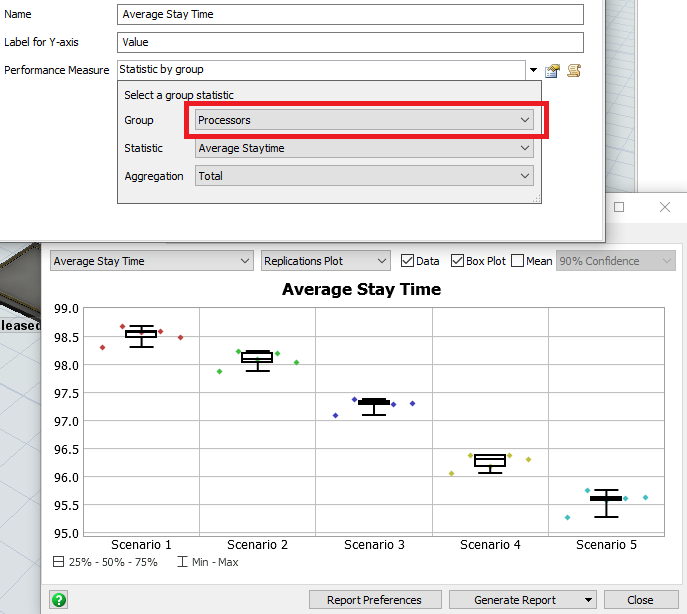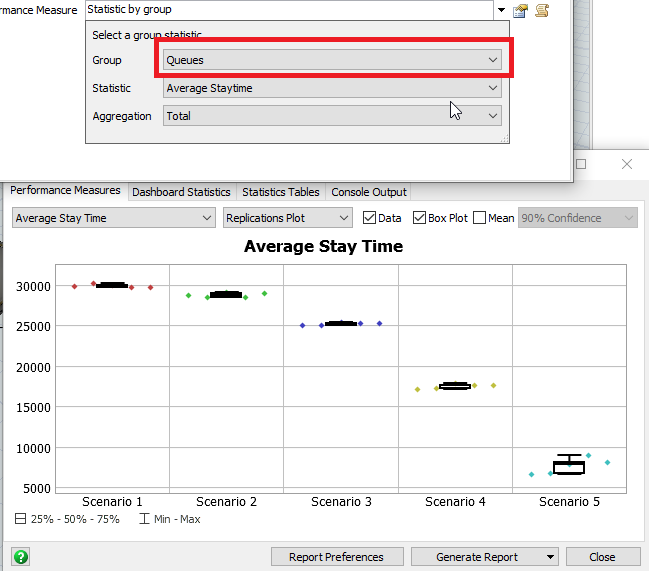Hello,
I am using the experimenter for comparing some scenarios. My run time for the experimenter is 28800 seconds. One of my performance measure is the average stay time. Therefore, for the performance measurement, I selected the group, then I selected the statistic as "average stay time" and selected aggregation as "total" because I want to have the total average stay time of an item on that group. However, when I run the experimenter, the average staytime becomes more than 28800 for some scenarios. I did not understand why it is higher than my runtime, if someone can help me with this problem, I would be appreciated. Thank you very much.




